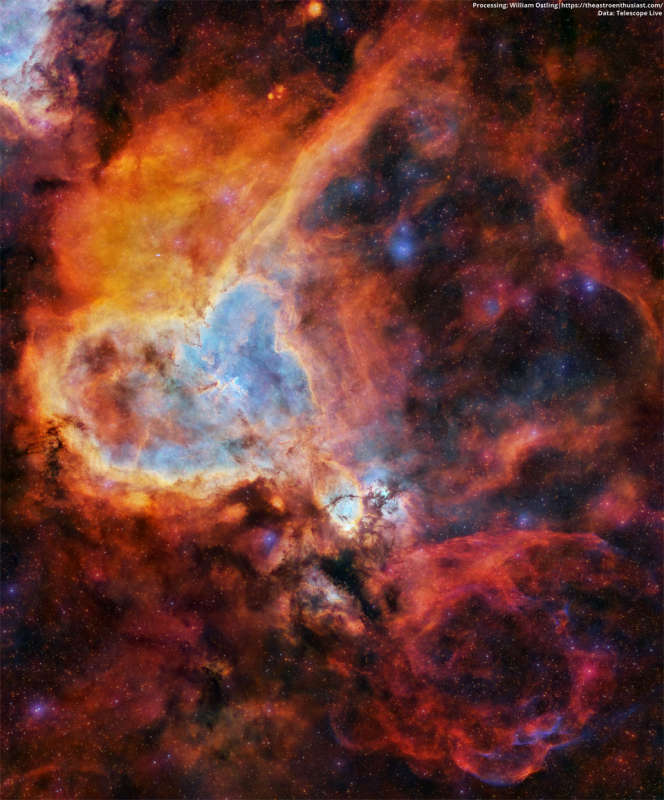Credit & Copyright: William Ostling,
Telescope Live
Explanation:
What excites the Heart Nebula?
First, the large emission nebula
on the left, catalogued as
IC 1805, looks somewhat like a human heart.
The nebula glows brightly in red light
emitted by its
most
prominent element,
hydrogen,
but this long-exposure image was also blended with light
emitted by silicon (yellow) and oxygen (blue).
In the center of the
Heart Nebula are young stars from the open star cluster
Melotte 15
that are eroding away several picturesque
dust pillars with their atom-exciting
energetic light and winds.
The Heart Nebula is located about 7,500 light years away toward the
constellation
of Cassiopeia.
At the bottom right of the Heart Nebula is the companion
Fishhead Nebula.
This wide and deep image clearly shows, though,
that glowing gas surrounds the Heart Nebula in all directions.
1999 2000 2001 2002 2003 2004 2005 2006 2007 2008 2009 2010 2011 2012 2013 2014 2015 2016 2017 2018 2019 2020 2021 2022 2023 2024 2025 |
Январь Февраль Март Апрель Май Июнь Июль Август Сентябрь Октябрь Ноябрь Декабрь |
NASA Web Site Statements, Warnings, and Disclaimers
NASA Official: Jay Norris. Specific rights apply.
A service of: LHEA at NASA / GSFC
& Michigan Tech. U.
|
Публикации с ключевыми словами:
Heart Nebula - emission nebula - эмиссионная туманность
Публикации со словами: Heart Nebula - emission nebula - эмиссионная туманность | |
См. также:
Все публикации на ту же тему >> | |
